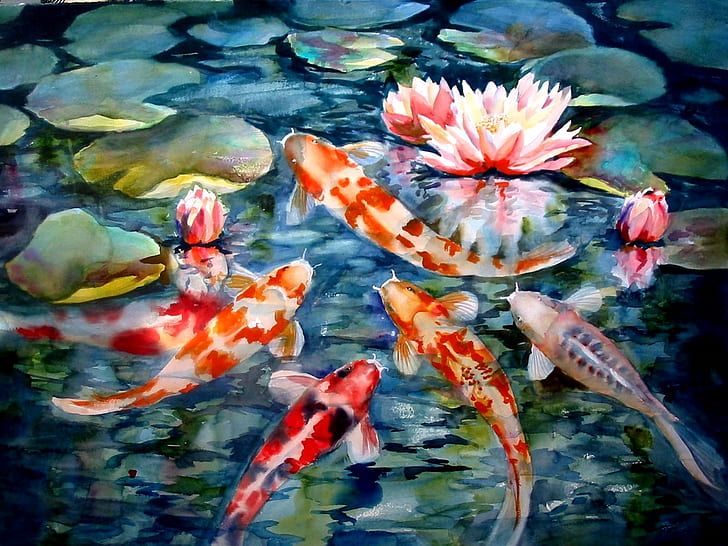The Art of Ichthyographic: A Dive into Fish Painting
 Posted On
Posted On
Fish painting, also known as ichthyographic, is a captivating and niche art form that has been cherished for centuries. It is a unique genre that combines the precision of scientific illustration with the aesthetics of fine art, resulting in stunning depictions of aquatic life. This article explores the history, techniques, and contemporary significance of fish painting in a world where digital art often dominates.
Historical Roots
Fish painting has a rich history that dates back to ancient civilizations. The Egyptians, for instance, used fish imagery in their tomb paintings and hieroglyphics to symbolize the fertility and abundance of the Nile. In medieval Europe, illuminated manuscripts often featured vividly illustrated fish, reflecting the cultural importance of aquatic life.
During the Renaissance, the scientific aspect of fish painting came to the fore. Pioneers like Albrecht Dürer and Conrad Gesner created detailed and accurate fish illustrations. These early works laid the foundation for ichthyographic as a scientific discipline, contributing to our understanding of fish species.
Techniques and Tools
Fish painting requires a meticulous approach to capture the intricate details of these aquatic creatures. Traditionally, artists used water-colour’s, gouache, or oil paints to bring fish to life on canvas. The choice of medium depends on the desired level of detail and realism. Watercolours, for instance, are often favoured for their transparency, making them ideal for portraying the shimmering scales and delicate fins of fish.
Artists use fine brushes and pigments to meticulously render the texture and colours of fish. Some even employ magnifying glasses to ensure precision. Studying fish anatomy is crucial to accurately portray their unique features, from the graceful curves of a koi’s body to the sharp angles of a pufferfish.
The Intersection of Art and Science
One of the most intriguing aspects of fish painting is its intersection with science. Lithographers not only create beautiful art but also contribute to our understanding of aquatic life. Their paintings serve as valuable references for biologists, ichthyologists, and marine conservationists. Accurate depictions of fish species aid in the identification and study of marine life, which is essential for conservation efforts.
Contemporary Relevance
In today’s digital age, fish painting remains relevant and has even gained new enthusiasts. While traditional techniques are still cherished, modern lithographers have embraced digital tools, enabling them to create highly detailed and lifelike representations of fish species. This blend of traditional and digital art has expanded the reach of fish painting, making it accessible to a wider audience.
Fish painting has also found a place in contemporary art galleries and exhibitions. The unique blend of scientific accuracy and artistic expression has attracted art enthusiasts and collectors alike. This resurgence of interest in ichthyographic has breathed new life into an age-old tradition.
Fish painting, or ichthyographic, is a captivating art form with a rich historical legacy. It seamlessly combines the precision of scientific illustration with the beauty of fine art, making it a unique genre that continues to flourish in the modern age. Whether created using traditional techniques or digital tools, fish paintings offer both aesthetic and scientific value, making them a meaningful and enduring contribution to the world of art. As we dive deeper into the realm of aquatic art, the beauty and wonder of the underwater world come to life on canvas, reminding us of the importance of preserving these fragile ecosystems.



